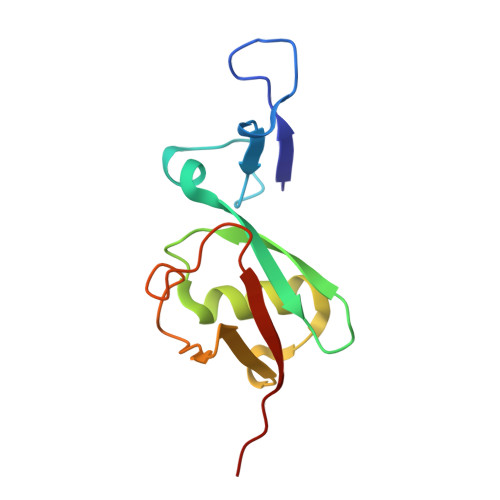Tailoring encodable lanthanide-binding tags as MRI contrast agents.
Daughtry, K.D., Martin, L.J., Sarraju, A., Imperiali, B., Allen, K.N.(2012) Chembiochem 13: 2567-2574
- PubMed: 23150430
- DOI: https://doi.org/10.1002/cbic.201200448
- Primary Citation of Related Structures:
3VDZ - PubMed Abstract:
Lanthanide-binding tags (LBTs), peptide-based coexpression tags with high affinity for lanthanide ions, have previously been applied as luminescent probes to provide phasing for structure determination in X-ray crystallography and to provide restraints for structural refinement and distance information in NMR. The native affinity of LBTs for Gd(3+) indicates their potential as the basis for engineering of peptide-based MRI agents. However, the lanthanide coordination state that enhances luminescence and affords tightest binding would not be ideal for applications of LBTs as contrast agents, due to the exclusion of water from the inner coordination sphere. Herein, we use structurally defined LBTs as the starting point for re-engineering the first coordination shell of the lanthanide ion to provide for high contrast through direct coordination of water to Gd(3+) (resulting in the single LBT peptide, m-sLBT). The effectiveness of LBTs as MRI contrast agents was examined in vitro through measurement of binding affinity and proton relaxivity. For imaging applications that require targeted observation, fusion to specific protein partners is desirable. However, a fusion protein comprising a concatenated double LBT (dLBT) as an N-terminal tag for the model protein ubiquitin had reduced relaxivity compared with the free dLBT peptide. This limitation was overcome by the use of a construct based on the m-sLBT sequence (q-dLBT-ubiquitin). The structural basis for the enhanced contrast was examined by comparison of the X-ray crystal structure of xq-dLBT-ubiquitin (wherein two tryptophan residues are replaced with serine), to that of dLBT-ubiquitin. The structure shows that the backbone conformational dynamics of the MRI variant may allow enhanced water exchange. This engineered LBT represents a first step in expanding the current base of specificity-targeted agents available.
- Department of Physiology and Biophysics, Boston University School of Medicine, Boston, MA 02218, USA.
Organizational Affiliation:


















